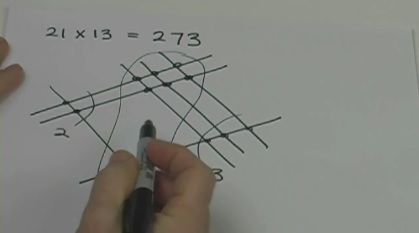The trick looks impressive, so be prepared for jaw-drops when you show this to kids and adults. But can you figure out how it works? I’ll give you a hint: think about how to represent placeholders of powers of 10…
Ok, so now watch the video:
Please login or register to read the rest of this content.


Yes, you’ve hit on the limitation of this method. It does get cumbersome with large numbers, and zero isn’t able to be represented by a line. This is a fun experiment to share with kids learning math that need a visual to help them grasp the meaning of numbers.
They are multiplying numbers using lines as a decimal placeholder instead of numbers. Cool, isn’t it?
Hmmm… that’s not something I have an experiment for… I think you’re on your own!
ok so seriously WHAT R THEY DOING???????
oh, hi aurora? u got any ideas on how i can make my own love tester….u know to see if people like me…another person or watevr? plz!!!!!
I love the way the multiplication is presented visually, I was just wondering how a number with a zero digit would be represented on the diagram? I also felt it was easier to multiply numbers with lower digits, once you get to digits above 5 it gets a bit tricky. I was also wondering about the history of this method, is it a method that was used in ancient times and is it a method that is still in use today?